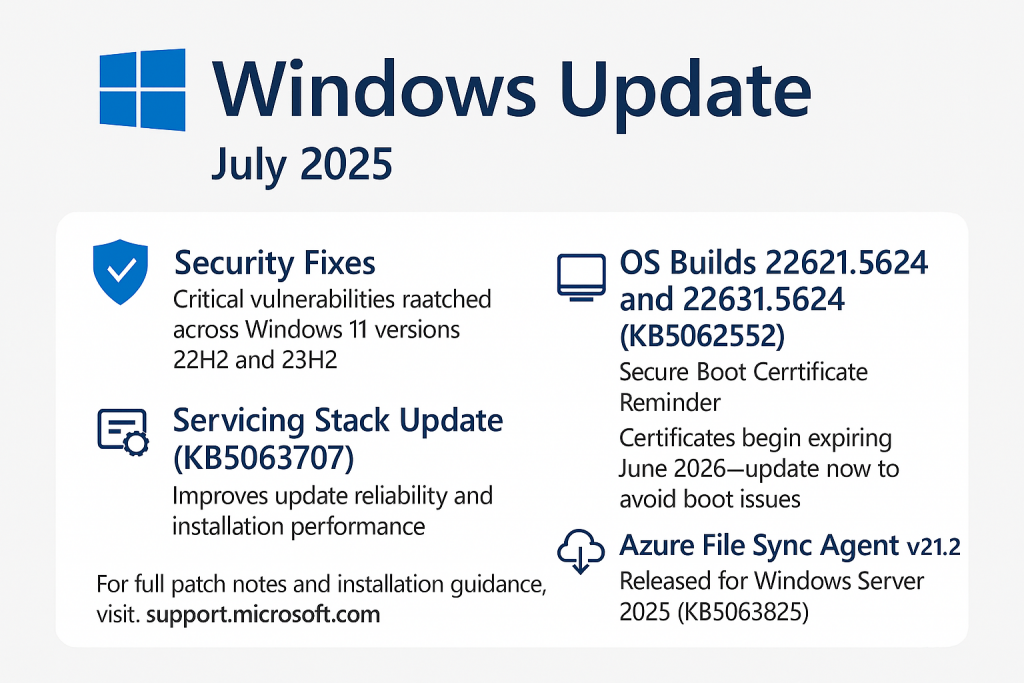
July 2025 Patch Tuesday: What You Need to Know
Microsoft’s July 2025 Patch Tuesday delivered a substantial security update, addressing 140 vulnerabilities across its product suite. This includes 14 critical and 115 important severity vulnerabilities, with one zero-day vulnerability publicly disclosed and patched
Key Vulnerabilities Addressed
1. Remote Code Execution (RCE) – 41 Vulnerabilities
- Critical Examples:
- CVE-2025-49717: A heap-based buffer overflow in Microsoft SQL Server that could allow authenticated attackers to execute remote code.
- CVE-2025-49735: A flaw in the Windows KDC Proxy Service (KPSSVC) enabling RCE in remote authentication scenarios like Azure Virtual Desktop
2. Elevation of Privilege (EoP) – 53 Vulnerabilities
- Affected components include Windows Kernel, Hyper-V, and Remote Desktop Client.
- These flaws could allow attackers to gain higher privileges on compromised systems.
3. Information Disclosure – 18 Vulnerabilities
- CVE-2025-49719: A zero-day vulnerability in Microsoft SQL Server that could allow unauthenticated attackers to disclose sensitive information over a network
4. Denial of Service (DoS), Spoofing, and Security Feature Bypass
- These vulnerabilities affect services like BitLocker, Intune, and the Connected Devices Platform, potentially leading to system instability or bypass of security controls.
Risks Mitigated by These Updates
- Preventing Exploitation of Known Threats: Several of the patched vulnerabilities were actively being exploited or had proof-of-concept code available.
- Protecting Remote Access Infrastructure: Updates to KPSSVC and RRAS help secure remote authentication and routing services.
- Securing Core Services: Fixes to Windows Kernel and Hyper-V reduce the risk of privilege escalation and system compromise.
Risks Introduced by Installing the Updates
While patching is essential, updates can occasionally introduce operational risks:
- System Instability: Updates to core components like SQL Server and Hyper-V may cause compatibility issues with legacy applications or services.
- Performance Degradation: Some patches, particularly those addressing speculative execution vulnerabilities (e.g., AMD L1 Data Queue issues), may impact system performance
- Deployment Complexity: Updates across diverse environments (e.g., pilot, early adopters, production) require careful scheduling and validation, as outlined in the DWF_Process manual
- Patch Gaps: As noted in the VmaaS Report April 25 , unsupported operating systems or third-party software may not receive updates, leaving residual risk
Recommendations
- Prioritise Critical Patches: Especially those affecting SQL Server, Hyper-V, and remote access services.
- Test Before Deployment: Use pilot groups to validate updates before full rollout.
- Monitor for Post-Patch Issues: Track system performance and application behaviour after updates.
- Address Unsupported Systems: Plan upgrades or compensating controls for systems that cannot be patched.


